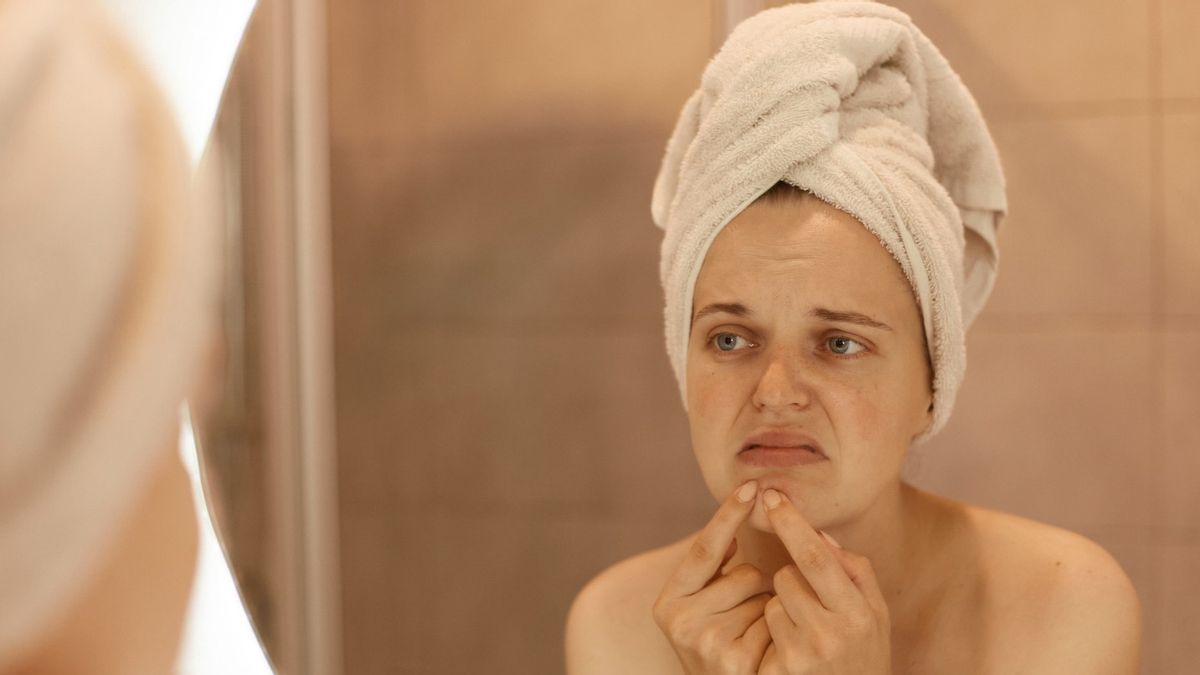YOGYAKARTA After the acne is lost, the skin is usually reddish and the texture changes. The technical term for calling the condition of the reddish skin inflamed due to acne is post-inflammatory erythema or abbreviated by PIE.
Post-inflammatory erythema occurs when inflammation occurs in acne and triggers increase and widening of blood vessels. Usually makes the skin appear red because the concentration of blood vessels increases. In addition, general reddening accompanies inflammation and also contributes to the formation of PIE. The type of acne that causes PIE is acne of papula and pustula. Commedal acne, such as black and white comodos, is not the cause of PIE.
PIE's intensity may be different. Sometimes the color will fade, but it's not a little darker in red, explains Marisa Garshik, MD., a board-certified dermatologist reported by Byrdie, Wednesday, January 18. The cause of post-inflammatory ERthema, among others, is as follows.
A person with acne prone skin generally has more natural skin oil production. This oil causes buildup in follicles and clogs the acne-causing channel. In addition, acne-related skin also has lower levels of fatty acids and higher squalene and wax ester. These two factors are believed to contribute to acne.
Although all skin types have bacteria, the skin is prone to acne having P. acnes bacteria that are higher than others. This type of service consumes excess oil and causes inflammation, redness, and infection. In addition, this bacteria also causes acne when digesting trapped oils. This causes fatty acid waste to cause irritation, inflammation, and redness in the skin.
If you've used hard products that don't fit your skin, you're most likely to experience irritation and redness as a result.
"Although there are many treatments for acne, it's important not to overdo it and avoid abrasive hard soaps and scrubs that can cause skin irritation that can exacerbate redness and post-inflammatory merits," Garshick said.
The recommendation is to avoid using too much active ingredients at the same time so as not to disturb the skin shield and cause excessive irritation.
Acne squeezing can increase the risk of PIE because it can trigger more severe inflammation and form scar tissue, explains Garshick. This is one of the main reasons why you should avoid touching acneated skin, no matter how much you want to remove the acne content.
CHANGES in hormone levels can cause acne. When testosterone levels are high, oil is produced more. In addition, monthly menstrual cycles, polyctic ovarian syndrome, perimenopaus, and menopaus are acne triggers that are motivated by hormonal changes.
The sixth factor that causes PIE, is not to exfoliate or remove dead skin cells regularly. Excess oil can exacerbate the blockage of follicle walls and contribute to holding dead skin cells.
That's an explanation of what PIE is on the face and the factors that contribute to shaping it. To overcome this, dermatologists may recommend skincare containing niacinamide to control oil and prevent acne. For more personalized, you need to consult a dermatologist about which skincare is right in dealing with post-inflammatory erythema.
The English, Chinese, Japanese, Arabic, and French versions are automatically generated by the AI. So there may still be inaccuracies in translating, please always see Indonesian as our main language. (system supported by DigitalSiber.id)













